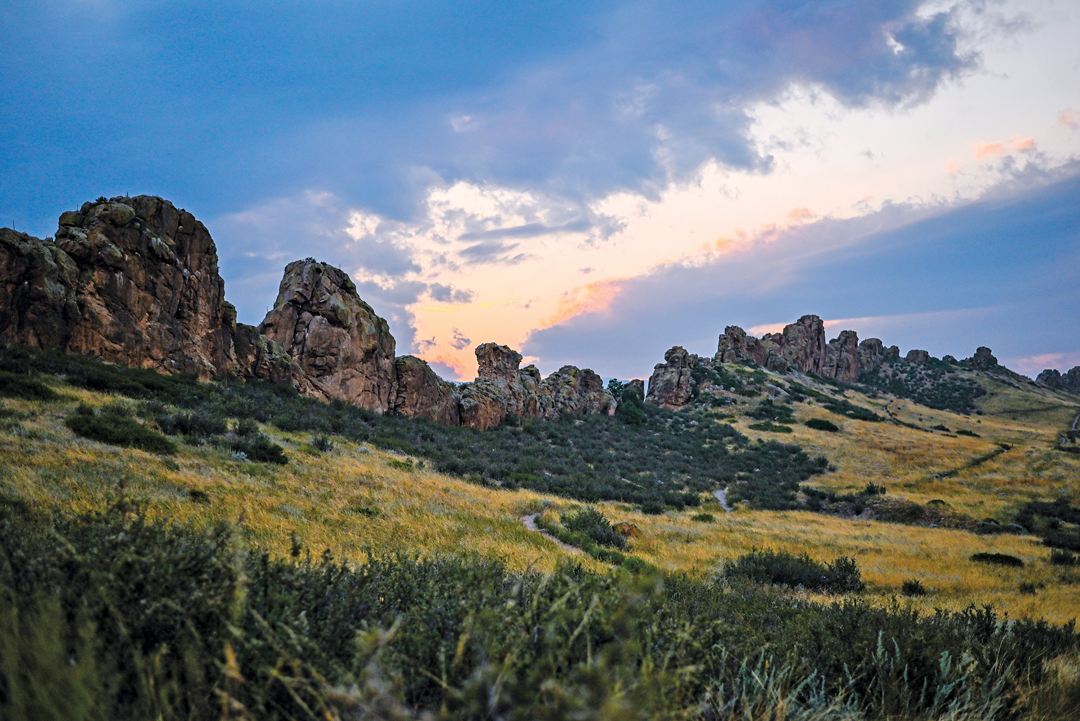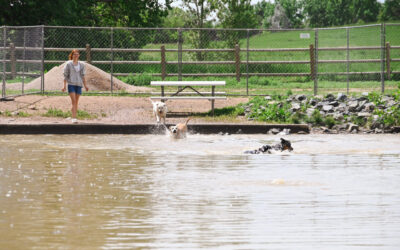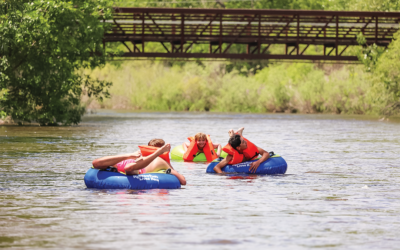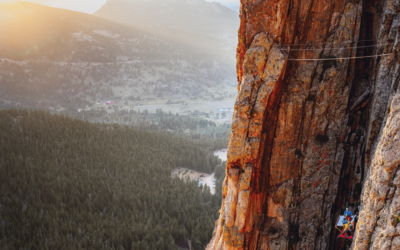There are some hikers and trail runners out there who believe mountain bikers have brought conflict to the peaceful outdoors. But Ken Chen believes those bikers have done more to resolve them.
“I do feel like a lot of mountain bikers have to, in the end, be nicer,” says Chen, a Fort Collins resident.
Yes, Chen is a mountain biker. But he’s also a trail runner, so he understands both sides. As the growing population gets out more and floods popular areas such as Devil’s Backbone, inevitable conflicts arise between hikers and bikers. The troublemakers come from both ends, from the slower hikers who choose to ignore “on your left” to the bikers who fail to deliver the common warning before passing.
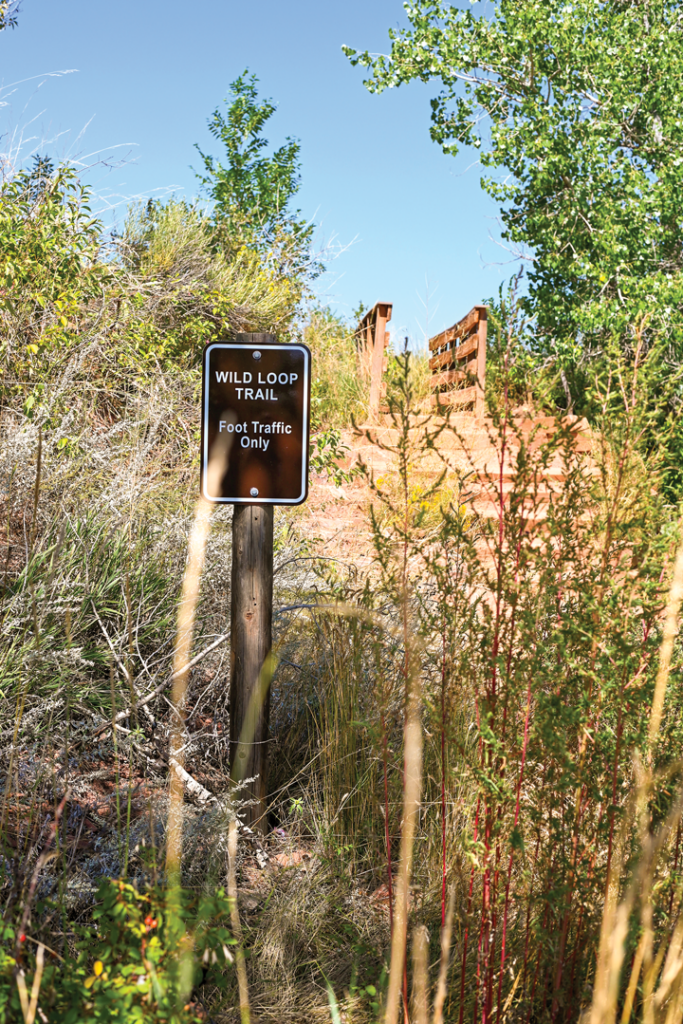
Photos by Jordan Secher.
Many on both ends say the conflicts are sparse, and yet the potential for conflict between hikers, trail runners and bikers was a lengthy topic of discussion during the design of Greeley’s first extensive open space park.
Chen believes bikers have to be gentler because they have had to fight for their space. Mountain bikers have put in many hours to build trails and parks, led by groups such as the Overland Mountain Bike Association, a Northern Colorado group that used to be a bike patrol organization until membership requests were so overwhelming that they expanded into trail building and advocacy. Chen is a member.
Trails that allow mountain biking aren’t as common as those for hikers and trail runners. The City of Boulder still doesn’t allow any riding on singletrack trails in public open spaces. Singletrack trails are wide enough for one person and are the most common trails in open spaces.
“Many trails aren’t open to mountain bikers, so they tend to behave better when they’re given the chance,” Chen says.
Again, he likes both groups—his girlfriend is a trail runner too—so he doesn’t want to blame anyone. He thinks trail conflicts, when they do occur, are more often random occurrences when hikers don’t hear a biker’s approach. This is why elderly hikers are sometimes startled by bikers, he says. Chen has less sympathy for hikers or runners blasting music in their ears.
“I saw an elderly lady panic when a bike went by her,” Chen says. “She fell over. He was apologetic. Sometimes things just happen.”
Conflicts sometimes happen when people don’t understand right-of-way and don’t leave enough room for each other to pass. These can be avoided with a little education. But Chen also thinks the accepted right-of-way standard needs a little tweaking.
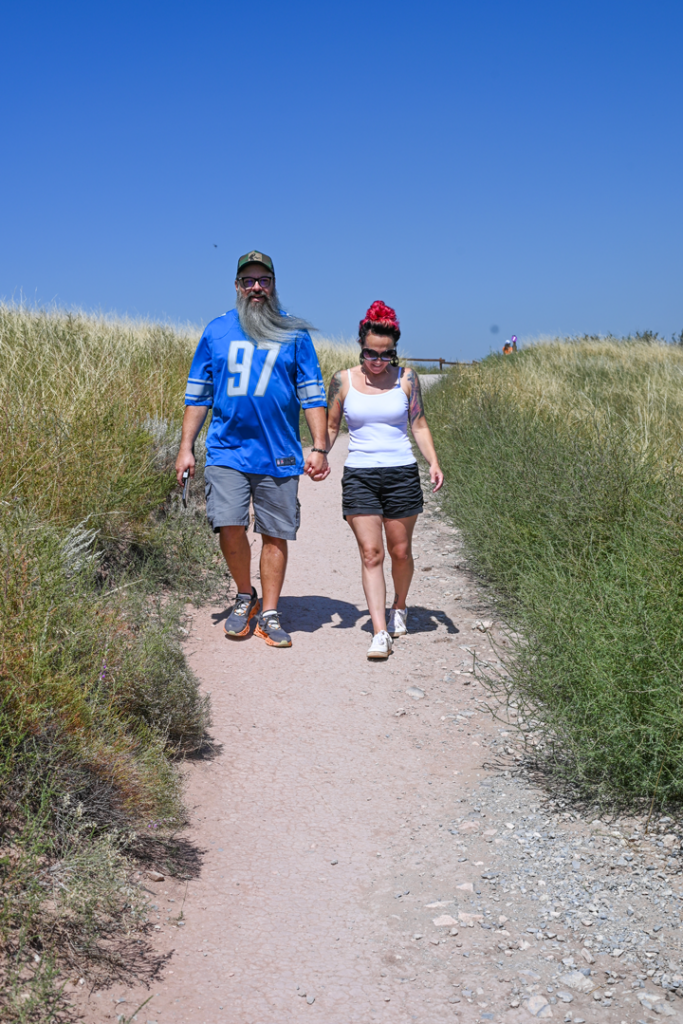
Right or wrong?
When he’s riding his bike, Logan VonBokel will generally let runners and hikers have the trail.
“If I don’t,” says VonBokel, a Fort Collins resident, “I get stuck in a game of chicken.”
VonBokel is also a trail runner and biker, so he, too, harbors affection for both groups. He finds that both groups don’t always know what to do when they meet each other, and if only one knows, it can still be awkward. Hence the game of chicken.
“I don’t think there’s intentional aggression there,” VonBokel says. “Sometimes you can’t hear each other, and then people get scared.”
This is why Chen believes the right-of-way rule doesn’t make much sense. The rule is that anyone going uphill has the right of way. He thinks that causes more obstinance than resolutions.
“A lot of people get into that entitlement thing,” Chen says. “They are going uphill and stand straight in the middle of the trail. That doesn’t work for me. Everyone should be aware, and a priority should be given to the people who are going faster. If I’m going downhill on a bike, it doesn’t make sense for me to pull over and let some slow hiker by me. If there were no rules at all, people would go by common sense.”
A decade of demand
It took 10 years, according to Zachary Cook, for Devil’s Backbone Open Space to go from, metaphorically, a small anthill to an ant farm.
When Cook started as a seasonal employee for the Larimer County Department of Natural Resources in 2006, Devil’s busiest area, the trail that leads to the Keyhole, was relatively quiet. He now patrols the area as the district ranger. More recently, the department estimated that 250,000 people visited Devil’s Backbone in a single year.
The count wasn’t entirely accurate, Cook admits, but he can safely say a lot of people use the trails, and all those people have different goals. Many are families and couples enjoying time outside, and some are hikers training for harder things, like climbing a 14er. As if that mix wasn’t enough, trail runners and mountain bikers also treat Devil’s Backbone as a playground and training ground.
That’s a diverse group, and yet, Cook doesn’t see the same kind of conflicts that tend to arise from such an eclectic mix.
“Considering we have that many people going through there,” Cook says, “I don’t think we have that many problems. People are very well behaved.”
Indeed, most mountain bikers, trail runners and hikers say that while the potential for biking and hiking conflicts remains high, fighting for space doesn’t happen all that much.
Then again, Larimer County attempted to discourage conflicts just a few years ago when it divided the main trail at Devil’s Backbone into two sections: one for bikers and trail runners and one for hikers. The county does the same thing on other popular trails, Cook says. The bikers’ trail bypasses the keyhole route, much like a bypass on a highway, and gives them access to trails deeper into the Devil’s Backbone open space.
“That’s been a really easy and successful management tool for us,” he says.
Cook knows this because when there’s a problem, it’s usually at the start, aka the quarter-mile stretch before the trails divide.
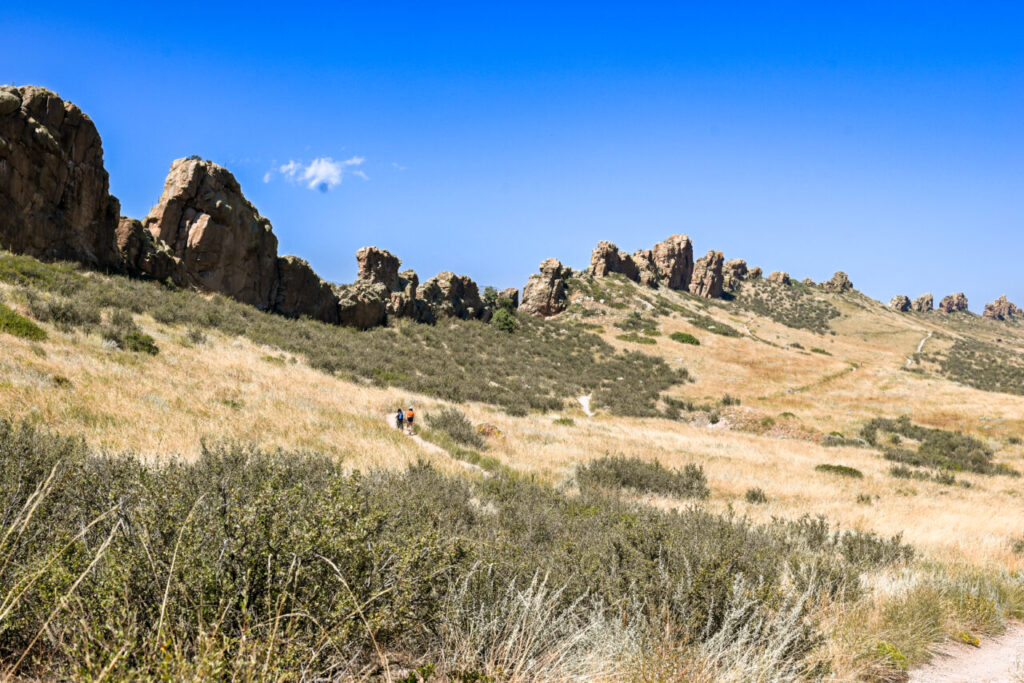
Larimer County separated the trails at Devil’s Backbone, as well as other popular trails in the county, as a response to the crowds more than fighting, Cook says. But the solution caught the attention of the City of Greeley as it planned a new natural area near Missile Silo Park with the help of community members. The natural resource planners and residents wanted to prevent conflicts as much as possible, so they designed parts of the area for different uses, including one specifically for mountain biking.
“It’s a common issue in the industry,” says Kristen Wilkinson, Greeley’s community conservation fellow and the leader in planning the area. “There was a strong desire among the community to have separate uses.”
As the natural area stretches into places only the hardcore hikers, runners and bikers will go, they will have to share with one another. All the planning will take several years to build out, so users will also have to patient. But it’s a safe bet that mountain bikers will have an area where they can get their zoomies out, which should help prevent most conflicts.
“There’s definitely a spot they can let loose,” Wilkinson says.
Ways to avoid conflict on the trail
Listen for others
Limit yourself to one headphone, keep the music low or don’t use music at all, and listen for the call “on your left.” Mountain bikers should warn hikers of additional bikers in their group as they pass by (and most veterans do).
Acknowledge them
Look people in the eye and smile when you first meet.
Know when to pull over
Hikers and bikers going uphill have the right of way. Following this rule should avoid nearly all conflicts.
Ditch the entitlement
You don’t have to insist on the right of way if the other person doesn’t seem aware of the rule. Plus, stepping aside gives you a chance to rest as you hike uphill.
Appreciate the space
Recognize that being in the outdoors is a privilege to be grateful for, one that can be ruined if picking fights takes precedence. Also, pick up after yourself (and your dog) to keep the trail nice for everyone.


